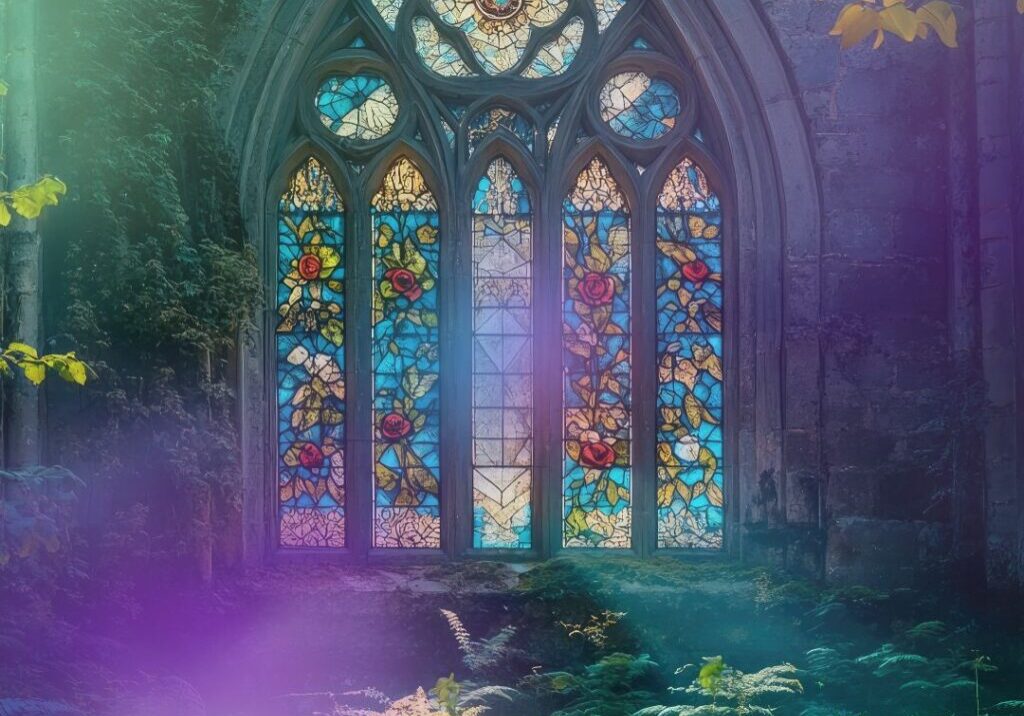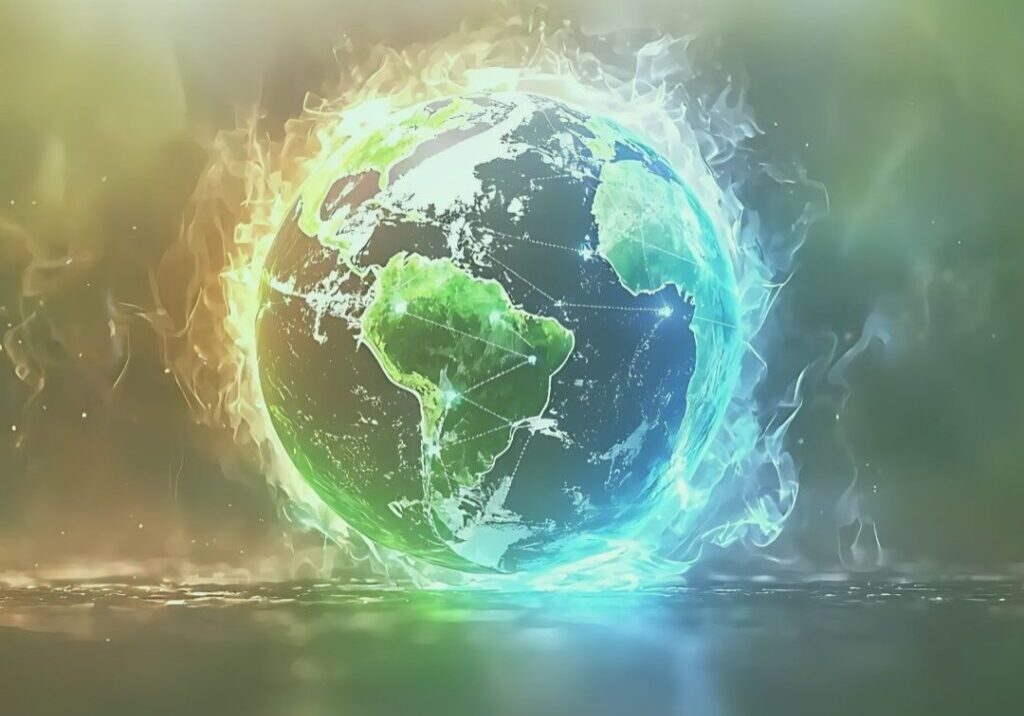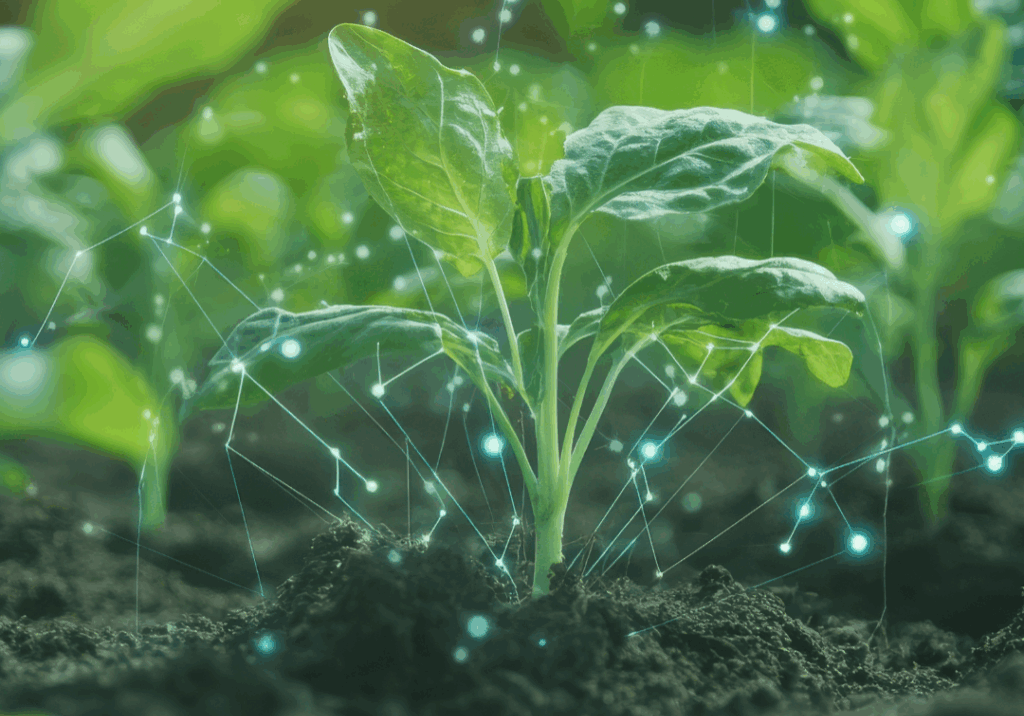Celebrating Interdependence
Question: What does a celebration of interdependence look like to you? What stories might you tell?
The idea of independence is a strong aspect of American cultural identity, and yet, in reality, it is an abstraction. During the month of July in the U.S. we celebrate the colonists’ independence from England with fireworks displays that are often loud, elaborate and magnificent, but the real fireworks occur every day in beautiful and intricate networks of interdependence both above the ground and below, as all of creation participates in the life of the divine, not as separate entities, but as interrelated parts of a sacred whole.
What does a celebration of interdependence look like? I need look no further than my backyard garden beds and fruit bearing bushes for an answer. As I breathe, I am aware that I am breathing in communion with all of life, including the soil, oceans and plants, which are the source of our food, fiber, fuel and material culture. Wasps fly from one raspberry bush to the next, while other pollinators visit the herb beds. Birds nibble on strawberries through the netting and leave their contributions to the ecology of the soil as they depart. Squirrels make off with cherry tomatoes, then leave them half-eaten on the top of the fence. Groping tendrils extend from grape vines in search of nearby support. Half of our large, circular garden bed is planted in root crops. While I can see the tops of the plants, I am aware of entangled networks of interwoven lives beneath the soil, including insects, mycorrhizae and decomposers. New potatoes grow outward from the mother tuber, mirroring the branching structure of the plant above, while white flowers at the top of the plant signal that all is going well below. My husband pours compost tea and compost from our bins into the soil, enabling earlier generations of plants to contribute to the lives of the current generation. Future meals emerge from the soil in all their glory and remind us that nature is entangled within and outside of our bodies.
Mycologist Merlin Sheldrake explains that “we are ecosystems, composed of – and decomposed by – an ecology of microbes, the significance of which is only now coming to light.”[1] Symbiosis is ubiquitous in this entangled world. Thus, Sheldrake proposes that it no longer makes sense to speak of individuals or of biology, which studies living organisms, but rather to think in terms of ecology, which studies the relationship between living organisms.[2]
We are spiritually entangled with nature as well. For, as Thomas Berry writes: “We see quite clearly that what happens to the nonhuman happens to the human. What happens to the outer world happens to the inner world. If the outer world is diminished in its grandeur then the emotional, imaginative, intellectual, and spiritual life of the human is diminished or extinguished.” He continues, “Without the soaring birds, the great forests, the sounds and coloration of the insects, the free-flowing streams, the flowering fields, the sight of the clouds by day and the stars at night, we become impoverished in all that makes us human.”[3] Berry contends that the universe is “a communion of subjects”[4] in which each member of the integral community of the Earth has its own dignity, role and voice; “Every being declares itself to the entire universe. Every being enters into communion with other beings.”[5]
We are also entangled with God. In John 15:4-5 Jesus says, “Abide in me as I abide in you. Just as the branch cannot bear fruit by itself unless it abides in the vine, neither can you unless you abide in me. I am the vine; you are the branches. Those who abide in me and I in them bear much fruit, because apart from me you can do nothing” (NRSV). The words “abide in me” in the NRSV biblical translation, rather than “remain in me,” as in other translations, are noteworthy as they capture the idea of intersubjectivity with God. Whatever agency we have is not of our own independent accord, but rather results from being an interdependent part of the sacred whole, apart from which there is no life. Jesus instructs his disciples to keep God’s commandment to “love one another as I have loved you” so that they may remain a part of the vine and their joy may be complete.[6]
In her work on Teilhard de Chardin, Ilia Delio emphasizes that reality is interwoven and that love energy is the relational energy of the universe. She writes, “Christ invests himself organically with all of creation, immersing himself in things, in the heart of matter, and thus unifying the world”[7] Delio further reflects, “In the search for who I am I find God, and in finding God I find my “self” as no separate self but being itself flowing into and out of an unquenchable power of divine love.”[8] She connects this to others when she writes, “If love is the reason we exist, then relationality is our deepest reality. We belong to one another because we belong to an infinite heart of love.”[9]
In her novel, The Bean Trees (1989) Barbara Kingsolver uses the metaphor of wisteria to represent a network of supportive relationships that speak to idea of belonging. The novel is about a young, rural Kentucky native, Taylor Greer, who only wants to get away from her roots and avoid getting pregnant. She succeeds, but suddenly inherits a 3-year-old native-American little girl named Turtle along the way, and together they search for a new life in the West. Turtle, however suffers from ‘failure to thrive,’ as the beginning of her life was in poor soil. Turtle is fascinated with “the bean trees,” or wisteria, and so Taylor reads up on them to learn more. Taylor discovers, The rhizobia are not actually part of the plant, they are separate creatures, but they always live with legumes: a kind of underground railroad moving secretly up and down the roots. “It’s like this,” I told Turtle. “There’s a whole invisible system for helping out the plant that you’d never guess was there.””[10] Extending the metaphor, she continues: “It’s just the same as with people. The way Edna has Virgie, and Virgie has Edna, and Sandi has Kid Central Station, and everybody has Mattie. And on and on.”The wisteria vines on their own would just barely get by, is how I explained it to Turtle, but put them together with rhizobia and they make miracles.”[11]
We might also look to the visions of St. Hildegard of Bingen as a celebration of entwined natures – in this case, human, angelic and divine. Regarding her 6th vision, she writes, “all of creation is a symphony of joy and jubilation”[12] Theologian Matthew Fox explains that the nine circles of Hildegard’s mandala correspond to the nine choirs of angels, yet the seven inner circles have human countenances.[13] Angels and humans “commingle, intermix, interrelate” and invite us into a dance of exaltation.”[14] In Hildegard’s organic view of the universe, “Everything that is in the heavens, on the earth, and under the earth, is penetrated with connectedness, is penetrated with relatedness.”[15]
While these understandings may challenge western notions of rugged individualism, living into them makes us more, not less. Consciously and intentionally abiding in one another, God and creation does not, in itself, eradicate the brokenness of our world, but it gives us a way to be physically and spiritually grounded in the midst of it, and to celebrate the many occasions for love, joy, strength, nurturing and healing it offers. Together we become better.
What does a celebration of interdependence look like you? What stories might you tell?
Notes:
[1] Sheldrake, M., Entangled Life: How Fungi Make Our Worlds, Change Our Minds & Shape Our Futures. New York: Random House, 2020, p.17.
[2] Sheldrake, p. 17.
[3] Berry, T., The Great Work, Our Way into the Future, New York: Bell Tower, 1999, p. 200.
[4] Swimme, B., and Berry, T., The Universe Story from the Primordial Flaring Forth to the Ecozoic Era. San Francisco: HarperCollins Publishers, 1992, p.243.
[5] Berry, T., The Great Work, p. 4
[6] John 15:11, 13, NRSV.
[7] The Hours of the Universe, p. 82.
[8] Hours, p. 49.
[9] Hours, p. 240.
[10] Kingsolver, B. (1989, 2013). The Bean Trees. New York: Harper Perennial, p. 305.
[11] Bean Trees, p. 305.
[12] Hildegard of Bingen, Scivias 100. The Sixth Vision of the First Part.
[13] Illuminations of Hildegard of Bingen, Santa Fe, NM: Bear & Company, Inc., 1985.
[14] Fox, 76.
[15] in Fox, 76
 View print-friendly version
View print-friendly version
7 Comments
Related Posts

Is Christianity in Crisis or Transition?
We are facing an unprecedented convergence of crises: global warming, climate change, mass migration, and systemic ecological collapse. Our planetary systems are exhausted and no longer able to sustain human…


We are both one and separate, which our understanding and experience of are mutually dependent upon a balanced comprehension of each other. It’s the age old one and the many. As an example, I taught personal boundaries at a drug and alcohol rehab.
Essentially, it’s about understanding and experiencing the boundaries of our separation in order to better understand and experience our foundational oneness. The more a person becomes aware of their “allotment” of responsibility i.e. their bodies, thoughts, desires, choices, attitudes, feelings, etc. where they stop and others begin and vice versa, the freer and more empowered they become. This results in healthier and more respectful relationships, real empathy (as opposed to lounge chair virtue signally regarded as actual virtue), kindness, love, compassion, etc.
The more we grasp where we stop and others begin, the more we grasp where others stop and we begin, the more we grasp that at our very foundation we are unified. We’ve emerged and have our being grounded in oneness. We are not like most other animals in that they do not have consciousness of their separateness. We on the other hand are the universe stepping outside of itself and there’s no crawling back into the womb no matter what kind of mental gymnastics we perform. The illusion of separation does not mean that there is no separation. The illusion of separation is referring to the illusion that our separation isn’t rooted in oneness. There’s a vast distinction.
Joe, I always enjoy reading your posts. What you write resonates with my understanding in some ways, and yet I grapple with it at the same time. I see deep divisions among people who sincerely believe they are being faithful to God, and I can’t help wonder how Christ can be at odds with Christ-self.
John, this is so eloquently written and inspiring!
I celebrate interdependence by reminding myself that spirituality is essentially the physics we don’t yet fully know and understand. And therefore, without choice, aware or unaware, and regardless of appearance, everything and everyone are one (entangled/ quantized) at that level. All that remains is to be conscious of that fact, which clears perception, thought and experience from the illusion of separation consciousness. In that sense every person who ever lived is one person, the Christ, appearing in a multitude of shapes sizes and forms, persons, places and things, like a countless number of tin toys and soldiers made from one and the same ingot of tin. Things aren’t what they appear to be. Separation consciousness is a human dream state, a hypnosis from which death to the ego, and physical death itself awaken me.
The human relationships that can be considered symbiotic are worth contemplating. I have experienced interrelatedness, and I see it through the lens of the Mystical Body. Where I err, I pray for forgiveness. I get the impression that doing good with no comparable recompense is part of divine providence.
Biologically I erred and I wrote spiracles instead of stomates! Holes of insect respiration versus holes of leaf transpiration! And we have our noses to have respiration. Sorry for the mistake!
One can extrapolate our reading today to include energy. The light energy of the sun (produced by hydrogen atoms fusing to form helium) energizes the chlorophyll in the plant leaf to transfer its energy into the bonds of glucose from the water coming up from the ground and the CO2 being absorbed through the spiracles of the leaves. In producing the glucose, there is the release of oxygen which passes through the spiracles and enters the air. We breath in the air with the oxygen which then combines with the glucose that we obtained by eating plant products. This produces carbon dioxide and water, which is released into the air and picked up by tree, starting the cycle over again. The energy released by the breakdown of glucose, with the addition of oxygen, forms adenosine triphosphate in our cells which then allows other transfers of energy and creation of bonds. This all is happening in real time. This flow of energy in this pattern produces life. Eventually, when we die, we lose the ability to transfer energy, and in the end, transfer our atoms back into the chemical process that produced our lives. We are not masters of this process but are dependent on it. It is this interdependence that allow us and our conscious awareness of life to exist. Our conscious awareness then allows us to live our lives in the way we chose, as best we can. Hopefully it allows for further and new complex and better conscious behaviors to evolve. As Teilhard de Chardin wrote, ‘ Someday after mastering the winds, the waves, the tides and gravity, we shall harness for God the energies of love, and then, for a second time in the history of the world, man will have discovered fire.”